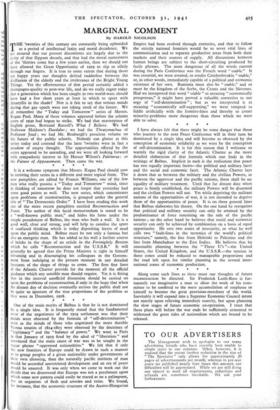I have always felt that there might be some danger
that those who journey to the next Peace Conference will in their turn be dominated by a single idea and will become as obsessed by the conception of economic solidarity as we were by the conception of self-determination. It is for this reason that I welcome so warmly the rigid clarity of the Atlantic Charter as the more detailed elaboration of that formula which one finds in the writings of Balbus. Implicit in each is the realisation that peace has two equally important facets—the political and military facet and the social and economic facet. The Atlantic Charter lays it down that as between the military and the civilian Powers, as between the aggressor and the pacific nations, there shall be no equality of military treatment. Until that far distant date when peace is firmly established, the military Powers will be disarmed and the civilian Powers will not. Yet while depriving the militant nations of the opportunities of war, it is not intended to deprive them of the opportunities of peace. It is on these general lines that Balbus elaborates his theory. On the one hand he recognises that political and military security can only be attained by the predominance of force remaining on the side of the pacific nations ; on the other hand he believes that social and economic security can only be achieved by combination on a basis of equal opportunity. He sees two zones of insecurity, or what he well calls two " fault-lines in the tectonics of the world's political structure," namely, the line from Helsinki to Palestine and the line from Manchukuo to the East Indies. He believes that by reasonable planning between the " Three U's "—the United States, the United Kingdom, and the U.S.S.R.—the tension in these zones could be reduced to manageable proportions and the road left open for similar planning in the several inter- national zones of economic production.
* * * *






















 Previous page
Previous page